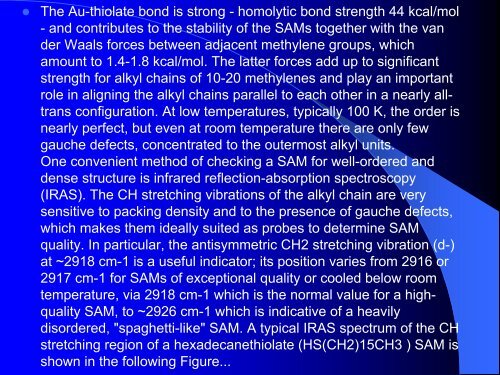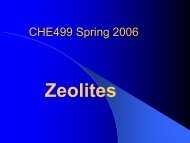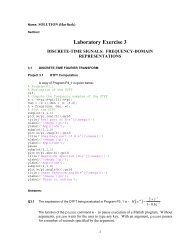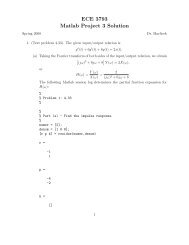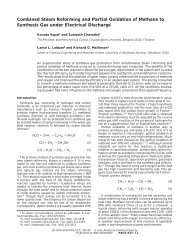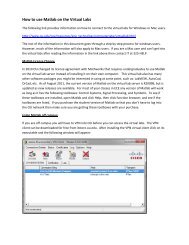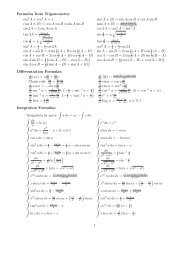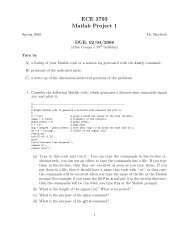Download self-assembled monolayers lecture
Download self-assembled monolayers lecture
Download self-assembled monolayers lecture
Create successful ePaper yourself
Turn your PDF publications into a flip-book with our unique Google optimized e-Paper software.
• The Au-thiolate bond is strong - homolytic bond strength 44 kcal/mol<br />
- and contributes to the stability of the SAMs together with the van<br />
der Waals forces between adjacent methylene groups, which<br />
amount to 1.4-1.8 kcal/mol. The latter forces add up to significant<br />
strength for alkyl chains of 10-20 methylenes and play an important<br />
role in aligning the alkyl chains parallel to each other in a nearly alltrans<br />
configuration. At low temperatures, typically 100 K, the order is<br />
nearly perfect, but even at room temperature there are only few<br />
gauche defects, concentrated to the outermost alkyl units.<br />
One convenient method of checking a SAM for well-ordered and<br />
dense structure is infrared reflection-absorption spectroscopy<br />
(IRAS). The CH stretching vibrations of the alkyl chain are very<br />
sensitive to packing density and to the presence of gauche defects,<br />
which makes them ideally suited as probes to determine SAM<br />
quality. In particular, the antisymmetric CH2 stretching vibration (d-)<br />
at ~2918 cm-1 is a useful indicator; its position varies from 2916 or<br />
2917 cm-1 for SAMs of exceptional quality or cooled below room<br />
temperature, via 2918 cm-1 which is the normal value for a highquality<br />
SAM, to ~2926 cm-1 which is indicative of a heavily<br />
disordered, "spaghetti-like" SAM. A typical IRAS spectrum of the CH<br />
stretching region of a hexadecanethiolate (HS(CH2)15CH3 ) SAM is<br />
shown in the following Figure...


